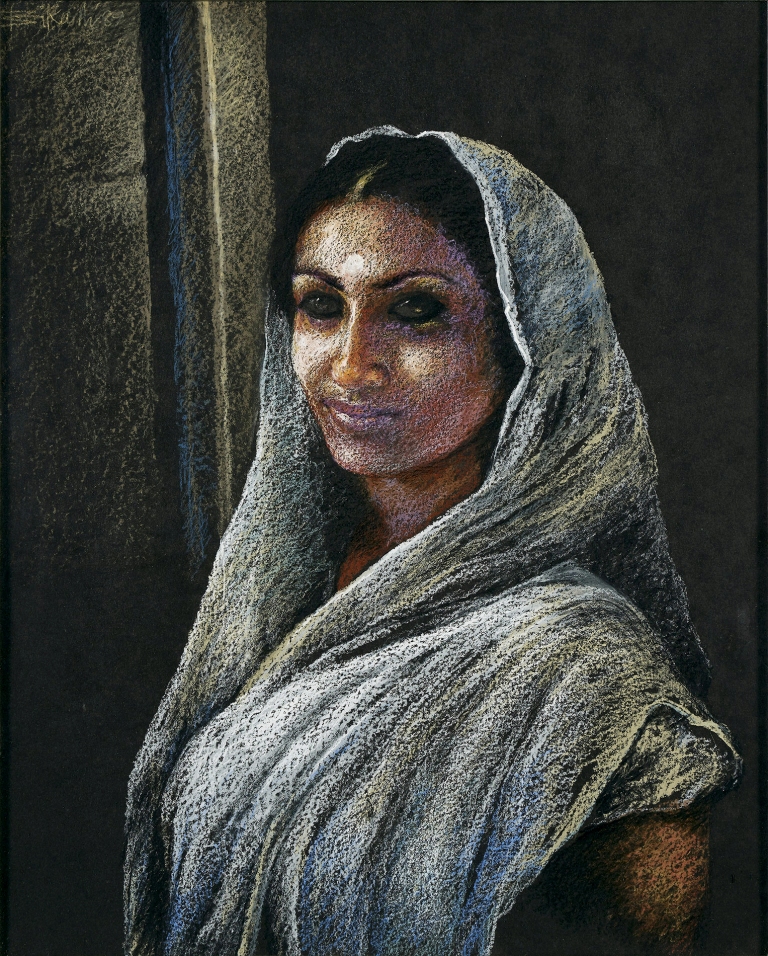Reclaiming The Maternal And Questioning The Norms Of Representation Of Motherhood In Contemporary Indian Art By The Women Art Practitioners
Dr. Aparna Roy Baliga
I would like to start with the key concepts which the paper is centredon, of experiences of embodiment of the maternal body, the representations of motherhood by the male artists and how the women reclaim their bodies from these representational tropes and talk about their experiences.
While pondering on the idea of embodiment what struck me first is that of the idea of embodiment of the women’s body as being maternal.The idea of maternity being removed from the biological and invariant and located in the social and historialcontext. Throughout the early phase of indigenous modernism mother and child had been a repeated motif,if she is not represented in a titillatory aesthetics then in the form of mother/nourisher.During the independence struggle the nation and it’s embodiment in the form ofBharatmata became important and this discussion becomes relevant in this context. While writing my doctoral research on Early 20thc. Women artists from Bengal, I found that the way Griselda Pollock discusses the spaces of femininity in the western context were different from the spaces of masculinity.But in the early 20th.c.Indian context one observes that when you look at the images painted by the women artists—their thematic concern with the domestic become appropriated by the male artists as the domain of the feminine and becomes antarmahal,or the inner domain on which the basis of nationhoodwas constructed ,antarmahal was unspoilt,was not dominated by the British Government. The symbol of motherhood would become an important trope to frame the discourse of nationhood. The mother image appears as the nurturer of values which are untouched and unspoilt,who resides in Ghar/home.The idea of nation gets embodied in the female body of a mother.In this context emerges Abanindranth’sBharatmata in 1905,the background being the partition of Bengal.The portrait was of his daughter who had died. It was named Bangamata and later was called Bharat Mata. This painting was enlarged and made into a silk banner by a Japanese artist which was carried in the antipartition processions. Sister Nivedita comments on Abanindranath’sBharat Mata-‘Using all the added means of expression which the modern period has bestowed upon him, the artist has here given expression never the less to a purely Indian idea, in Indian form. The curving line of lotuses and the white radiance of the halo are beautiful additions to the Asiatically conceived figure with its four arms, as the symbol of the divine multiplication of power. This is the first masterpiece, in which an Indian artist has actually succeeded in disengaging as it were, the spirit of the motherland, giver of faith andlearning, of clothing and food, and portraying her, as she appears to the learning, of clothing and food, and portraying her, as she appears to the eyes of Her children. And yet in every detail, of ‘Sankha’ bracelet, and close-veiling garment, of bare feet, and open, sincere expression, is she not after all, our very own, heart of our heart, at once mother and daughter of the Indian land, even as to the rishis of old was Ushabala, in her Indian girlhood, daughter of the dawn?’ (Fig.28)
SumathyRamaswamy attempts to contour the idea of Bharat Mata. She says-‘In the closing decades of the nineteenth century in a land already thronging with all the manner of Gods and Goddesses there surfaced anovel deity of nation and country who at moments in the subsequentyears seemed to tower over them all .Invoked in English as ‘mother India’ and most usually in various Indian languages as ’Bharat mata’,literally ‘Indian mother’. She was over time imagined as the substantial embodiment of national territory-its inviolable essence, its shining beacon of hope and liberation-and also as a powerful rallying symbol in its long hard struggle for independence from the modern world’s largest empire.
Read More>> Please Subscribe our Physical Magazine


